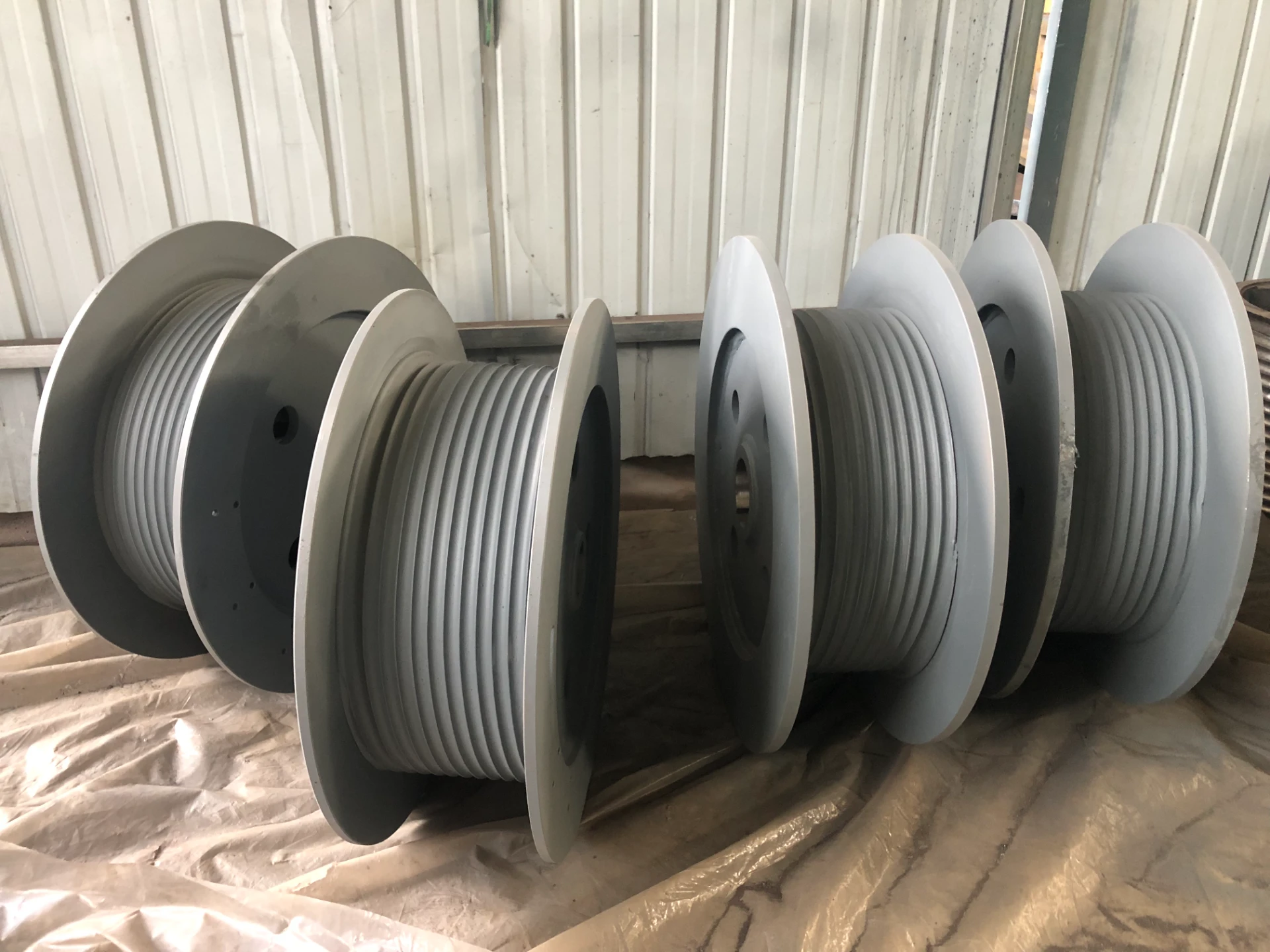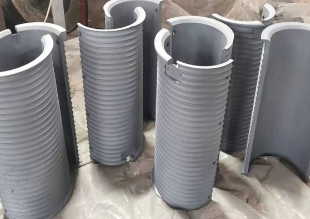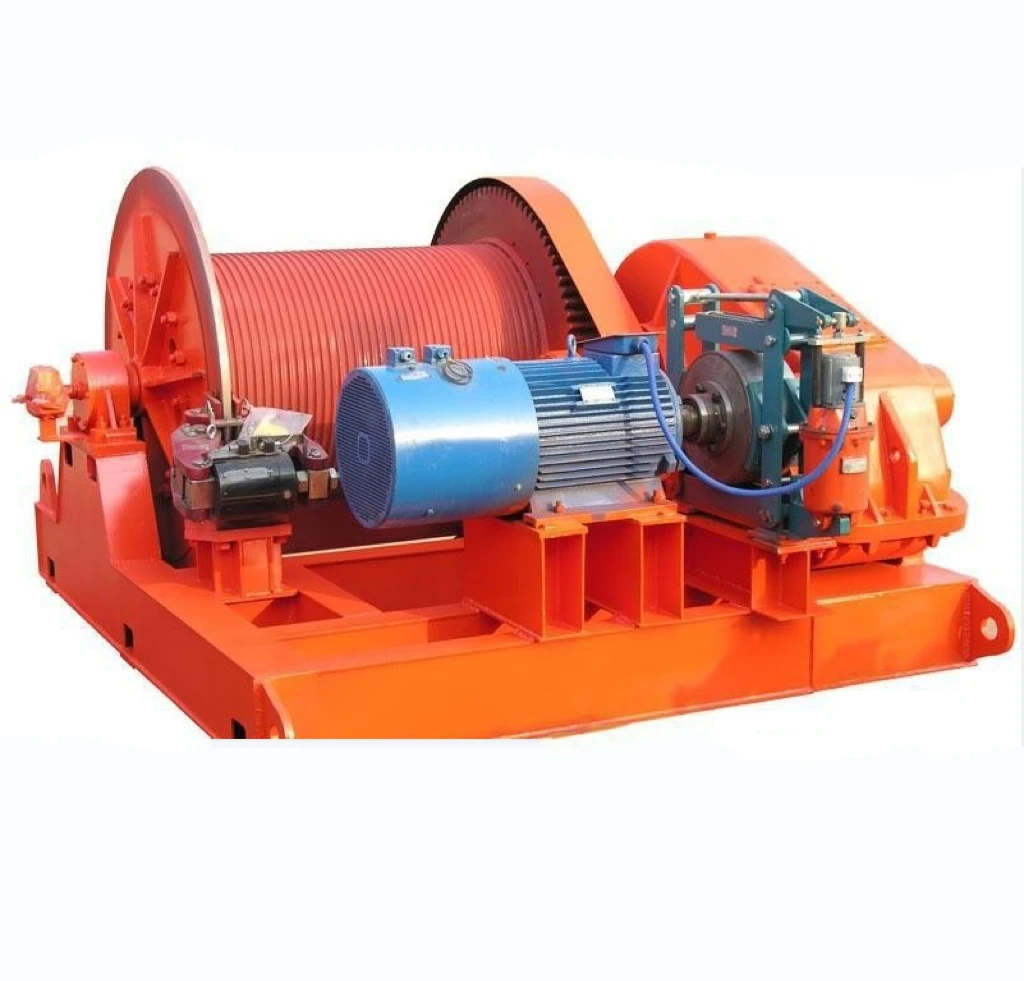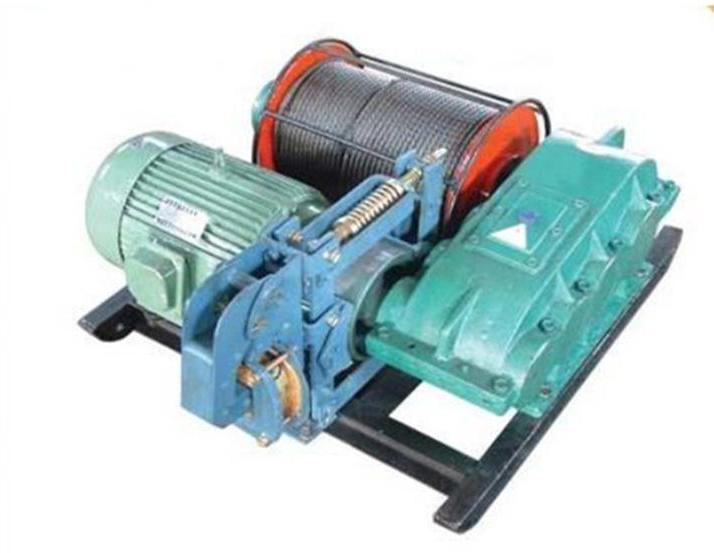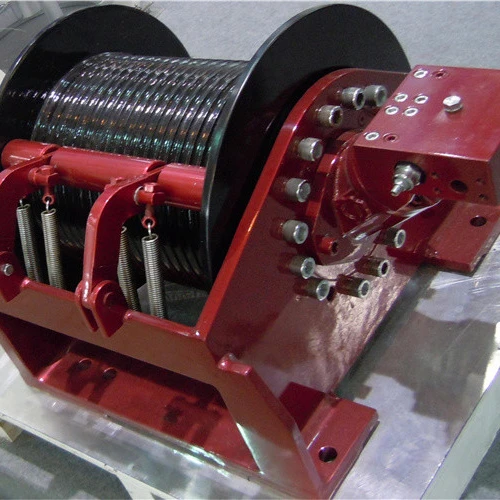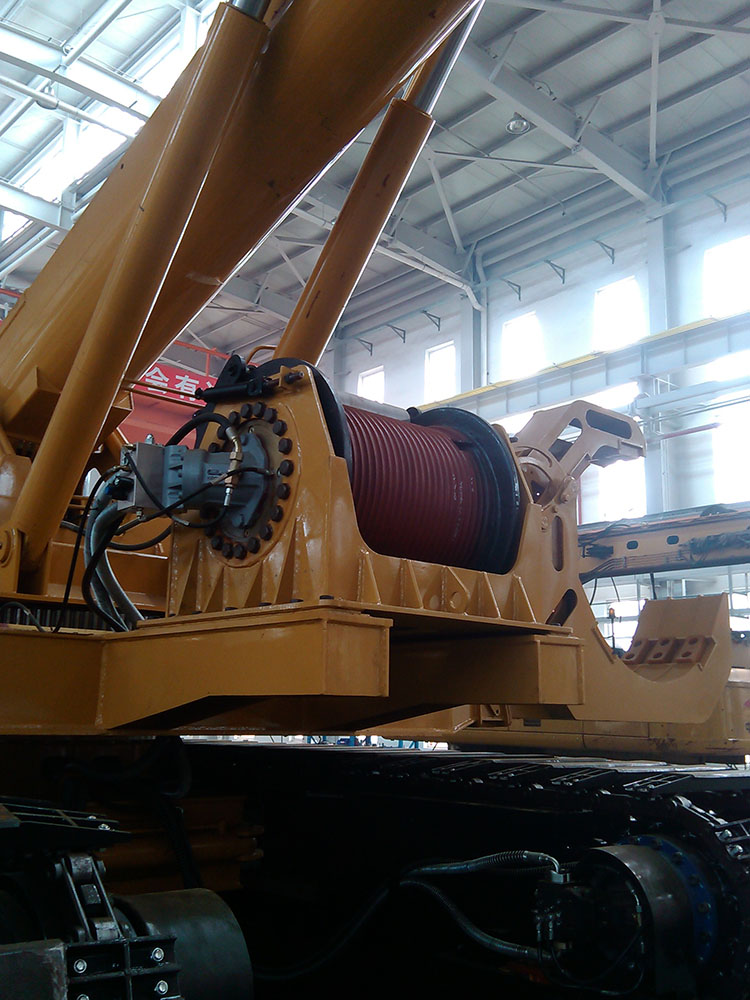Hydraulic Crane Winch – Powerful & Precise Heavy Lifting Solutions | LBS Winch
Understanding Hydraulic Crane Winches: Why They Matter Globally
Hydraulic crane winches might not be the flashiest piece of machinery on a construction site or port dock, but their importance shouldn’t be underestimated. Imagine lifting or pulling extremely heavy loads — ships, steel beams, cargo containers — with precise control and power. This is what the hydraulic crane winch brings to the table. At an industry level, these winches are critical in everything from shipping logistics to disaster relief. Recently, with global infrastructure projects booming and humanitarian organizations frequently operating in rough terrains, understanding what makes a hydraulic crane winch tick is more relevant than ever.
The global crane and winch market, buoyed by rising demand in Asia-Pacific and increasing maritime trade, is projected to grow steadily within this decade (according to various market analysts). Yet despite their prevalence, many don’t fully appreciate the technical nuances and practical benefits these machines offer.
The Big Picture: Hydraulic Crane Winches on the World Stage
Globally, maritime trade exceeds 80% of merchandise transport by volume, and ports depend heavily on cranes equipped with robust winches to maintain steady flow. According to the International Maritime Organization (IMO) and ISO standards, safety and efficiency in load handling are not just regulatory boxes but vital business assets. Hydraulic crane winches solve a long-standing problem: how to safely manage extreme weight with variable control, even under challenging weather or space constraints.
Beyond commercial shipping, these winches become unsung heroes in disaster zones—lifting debris, moving supplies, and powering rescue equipment. The UN Office for Disaster Risk Reduction often highlights the need for reliable mechanical aids like this when infrastructure is crippled but time is critical.
What Exactly Is a Hydraulic Crane Winch?
Simply put, a hydraulic crane winch is a winch powered by a hydraulic motor, designed to wind or unwind a rope or cable connected to heavy loads. Unlike electric or mechanical winches, hydraulic ones leverage fluid pressure to deliver smoother, stronger, and more controllable force. This means they can handle heavier weights and provide finer precision control, which is absolutely crucial on cranes.
Hydraulic winches are often paired with cranes to enhance lifting capacity and control — essential in construction, shipping, and heavy industry worldwide. Oddly enough, despite advances in electric drives, hydraulics hold their ground thanks to reliability, simplicity, and power density.
Key Components You Should Know
1. The Hydraulic Motor
The beating heart of the winch, converting pressurized fluid energy into mechanical torque. Its design and efficiency directly affect power output and responsiveness.
2. Drum and Cable System
This is where the cable is wound. Its size and construction impact the overall load capacity and durability.
3. Control Valves
Fine-tune speed and torque, allowing operators to make delicate adjustments during lifting or pulling.
4. Hydraulic Reservoir and Pumps
These supply and regulate the hydraulic fluid, ensuring consistent pressure and protecting the system from overheating.
5. Safety Brakes and Load Holding Mechanisms
Integral for preventing load drop, especially under sudden stops or emergencies.
Hydraulic Crane Winches in Action: Real-World Use Cases
From bustling Asian container ports to remote mining sites in Africa, hydraulic winches are everywhere. In ports, they speedily and reliably load/unload goods, supporting global commerce. For instance, in Singapore’s port, cranes equipped with hydraulic winches manage up to 90 million TEUs (twenty-foot equivalent units) annually. That’s a mind-boggling logistical feat!
In humanitarian scenarios, NGOs use mobile cranes with hydraulic winches to set up makeshift bridges or lift materials in terrain where trucks can’t tread. The Red Cross and similar organizations often rely on such equipment in post-disaster relief—smoothing logistics, minimizing human labor risks, and ensuring timely aid deliveries.
Mini Takeaway:
Understanding the inner workings of hydraulic crane winches helps reveal why they remain indispensable for heavy load management worldwide — from port logistics to disaster zones.
Advantages & Long-Term Value of Hydraulic Crane Winches
- Superior Power & Control: Hydraulic systems offer enormous torque and precise manipulation, unmatched by many electric counterparts.
- Durability & Reliability: These winches handle harsh environments — saltwater corrosion at ports or dusty mining conditions — much better than traditional models.
- Cost-Efficiency Over Time: While initial investment may be higher, reduced maintenance and downtime save money and headaches.
- Safety Enhancements: Smooth braking and load control minimize accidents, protecting operators and cargo alike.
- Sustainability Potential: Advances now integrate eco-friendly hydraulic fluids and energy recuperation.
Many engineers point out that while electric winches are catching up in some areas, it feels like hydraulic crane winches still hold their crown when raw power and reliability count most.
Hydraulic Crane Winch – Product Specification Overview
| Specification | Typical Values | Notes |
|---|---|---|
| Max Load Capacity | up to 150 tons | Dependent on model and drum size |
| Line Speed | Up to 30 m/min | Variable by hydraulic flow adjustment |
| Motor Type | Axial piston hydraulic motor | Highly efficient and robust |
| Brake System | Multiple disc hydraulic brake | Ensures load holding on slope |
| Cable Diameter | Up to 32 mm | Varies with load specs |
Comparing Top Vendors of Hydraulic Crane Winches
| Vendor | Max Load Capacity | Price Range (USD) | Lead Time | Notable Feature |
|---|---|---|---|---|
| WinchPro Industries | 100 tons | $30,000 - $50,000 | 6-8 weeks | Customizable drum sizes |
| HydroLift Corp. | 150 tons | $45,000 - $70,000 | 8-10 weeks | Energy-efficient hydraulic systems |
| CraneTech Solutions | 120 tons | $35,000 - $55,000 | 5-7 weeks | Integrated digital controls |
Looking Ahead: The Future of Hydraulic Crane Winches
It's hard not to get excited about the convergence of hydraulics with smart technologies. Remote digital monitoring and controls, IoT integration, and eco-conscious hydraulic fluids are changing the game. Some developers are experimenting with energy recovery systems where winches recapture energy during lowering loads — very much in line with global sustainability agendas.
Then there’s the material side: advanced composites and corrosion-resistant alloys promise lighter, longer-lasting winches. That makes installation and maintenance a breeze — especially offshore where time is money, and components face brutal saltwater exposure.
Common Challenges and Smart Solutions
No machine is perfect. Hydraulic crane winches deal with issues like potential fluid leaks, system overheating, or complexity in repair. Yet today, better seal technologies and predictive maintenance (using sensors) allow operators to catch faults before they become critical. In fact, many companies now embed diagnostics within the systems to reduce downtime drastically.
FAQ: Practical Questions About Hydraulic Crane Winch
Q1: What makes hydraulic crane winches better than electric ones?
Hydraulic winches provide higher torque and smoother control under heavy load conditions, especially in extreme environments. They also tend to be more durable and simpler to repair onsite, which is why many engineers prefer them for maritime and construction applications.
Q2: How easy is it to customize hydraulic crane winches for unique applications?
Quite easy. Manufacturers offer various drum sizes, cable options, and control systems. Vendors frequently work closely with clients to match winch specs precisely to load requirements and environmental conditions, ensuring maximum efficiency and safety.
Q3: Are there eco-friendly options for hydraulic crane winches?
Yes, newer models incorporate biodegradable hydraulic fluids and energy-saving features, like pressure-compensated pumps and energy recovery during winch lowering. These innovations reduce environmental impact without compromising performance.
Q4: How can I maintain a hydraulic crane winch in harsh environments?
Routine inspections for leaks, using high-quality seals, and maintaining oil cleanliness are key. Additionally, protective coatings against corrosion and temperature controls help extend winch life considerably.
Q5: Where can I find reliable suppliers for hydraulic crane winches?
It's best to look for vendors with industry certifications (ISO 9001, CE) and proven field service support. Check references, warranty terms, and after-sales service capabilities. For example, hydraulic crane winch suppliers like LBS Winch offer comprehensive packages tailored for maritime and industrial clients.
Wrapping Up: Why Hydraulic Crane Winches Are the Industry Backbone
The long-term value of hydraulic crane winch technology isn’t just in raw lifting power but in reliability, adaptability, and safety. Whether in a busy container terminal, a high-stakes mining operation, or emergency relief setting, these machines enable us to do the heavy lifting — literally and figuratively.
Curious to see how their latest designs can optimize your operations? Visit our website at https://www.lbswinch.com for more insights and tailored winch solutions.
References:
-
Double Drum Hydraulic Winch – Durable, Efficient Load Handling SolutionsNewsNov.25,2025
-
Hydraulic Drum Winches: Powering Heavy Lifting with Precision and DurabilityNewsNov.24,2025
-
Hydraulic Driven Winch – Reliable Heavy Lifting Solutions for Industry & ReliefNewsNov.24,2025
-
Electric Over Hydraulic Winch: Efficient, Durable Lifting Solutions for Modern IndustryNewsNov.23,2025
-
Hydraulic Logging Winch Guide | Global Applications & InnovationsNewsNov.22,2025


